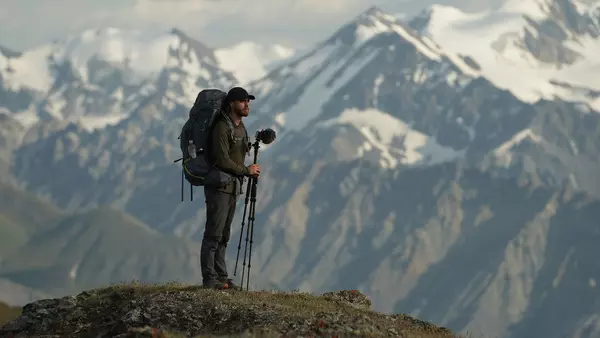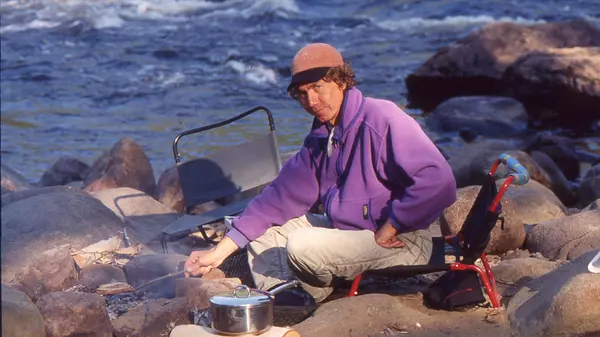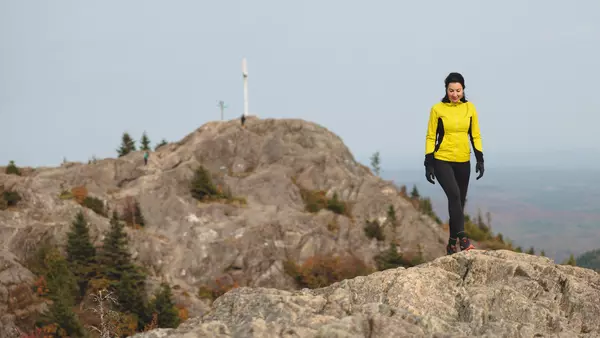Just because hiking takes place in nature and requires minimal gear doesn't mean it doesn’t impact the environment. Without realizing it, as you walk along your favourite trails, you risk disrupting the delicate balance of wildlife and flora. That is why we are sharing some tips for practicing this activity while respecting nature.
Maximize the positive impacts of hiking on your health while minimizing its negative impacts on nature
You've read our introduction and suddenly fear you’ll have to hang up your hiking poles? Not at all! The solution isn't to stay indoors and stop enjoying the outdoors altogether.
In addition to being beneficial for our physical health, walking in the forest has been proven to have positive effects on our mental health, notably by reducing stress and anxiety. In fact, a Quebec evidence-based nature exposure prescription program called Prescri-Nature was launched in 2022.
So, how can you reap all the benefits of your hike while respecting the environment? Follow our 6 tips, and it’ll be a walk in the park!
1. Don't litter
One might think this is common sense, but not everyone knows how to properly manage their waste in nature. And we're not just talking about a candy wrapper or a plastic bottle: even an apple core thrown into the forest can have negative impacts on wildlife and flora!
Non-biodegradable waste
These are the types of waste that should absolutely be avoided along trails. Materials like chewing gum and plastic take years, even centuries, to decompose. We suggest always carrying a small bag with you to store your non-biodegradable waste until you return. We also recommend using washable and reusable items instead of single-use plastic, such as our stainless steel water bottle.
Biodegradable waste
Unprocessed food waste, like fruit and vegetable peels, should be stored in a small container to be composted at home or directly at the hiking site if such a bin is available.
Otherwise, biodegradable waste littering the ground may attract animals to areas where they shouldn't venture, make them sick, and harm surrounding plant species.
2. Respect marked trails
You've certainly seen those small signs planted in the ground that prohibit walking outside of the trails during your forest outings. They're there for a good reason! While it may be tempting to venture into the wild, your hiking boots will trample on fragile wildlife and flora.
For those who might think straying from a trail here and there isn't a big deal: imagine if several hikers thought the same. The consequences would be devastating for the natural environments we love so much
3. Avoid picking protected species
While out for a stroll, the urge may strike you to create a small bouquet of wildflowers for your kitchen vase. You may want to think twice! Similar to marked trails, if each person starts picking plant species along the way, nature will quickly be stripped of its resources.
In addition to altering the landscape by depriving others of a pretty flower encountered along the way, you're removing a food source for various species that are part of the ecosystem.
4. Wear clothing made from recycled materials
We're veering slightly off the trail to focus on consumption choices that affect the global environment, including the hiking clothes you wear to stay warm and dry.
At Chlorophylle, we're aware of the impact of fashion on our ecosystems’ health. That's why we're placing more and more importance on the sustainability and footprint of materials used in our collections. We offer several products made entirely or partially from recycled materials.
5. Try to borrow or share equipment before making a purchase
If you hike occasionally or are just starting to engage in this activity, it might be preferable to borrow equipment before considering purchasing a whole kit. In addition to saving money and freeing up space in your garage, you are fighting overconsumption.
If you don't know anyone in your circle who hikes or camps, there are specialized outdoor Facebook groups that can help. Le Partage Club app is also a great option for borrowing hiking poles or a tent at no cost from someone in your neighborhood.
6. Choose low-emission transportation
Transportation is a well-known source of pollution that can quickly increase the carbon footprint of your outdoor activity. But don't be discouraged! There are several ways to reduce the impact of your journey:
- Drive a hybrid or electric car
- Carpool
- Rent a car through car-sharing
- Travel to a natural area accessible by public transportation (e.g., Mount Royal Park or Îles-de-Boucherville National Park)
- Use the Navette Nature
We hope these tips will help you hike with peace of mind, knowing that you've made the necessary efforts to respect the wildlife and flora around you. Happy hiking!
Blog
See all articlesSign up to get 10% off your first order.
A confirmation email containing your promotional code will be sent to you. If you cannot find it in your inbox, please check your spam folder.
By subscribing, you accept that we will send you emails concerning promotions, events, products and other exclusive advantages that are only available to our subscribers.





